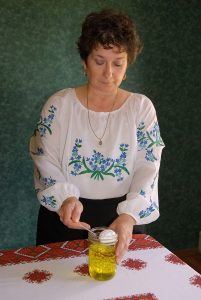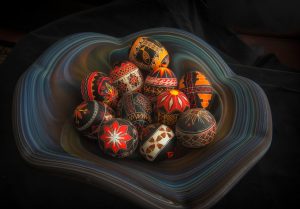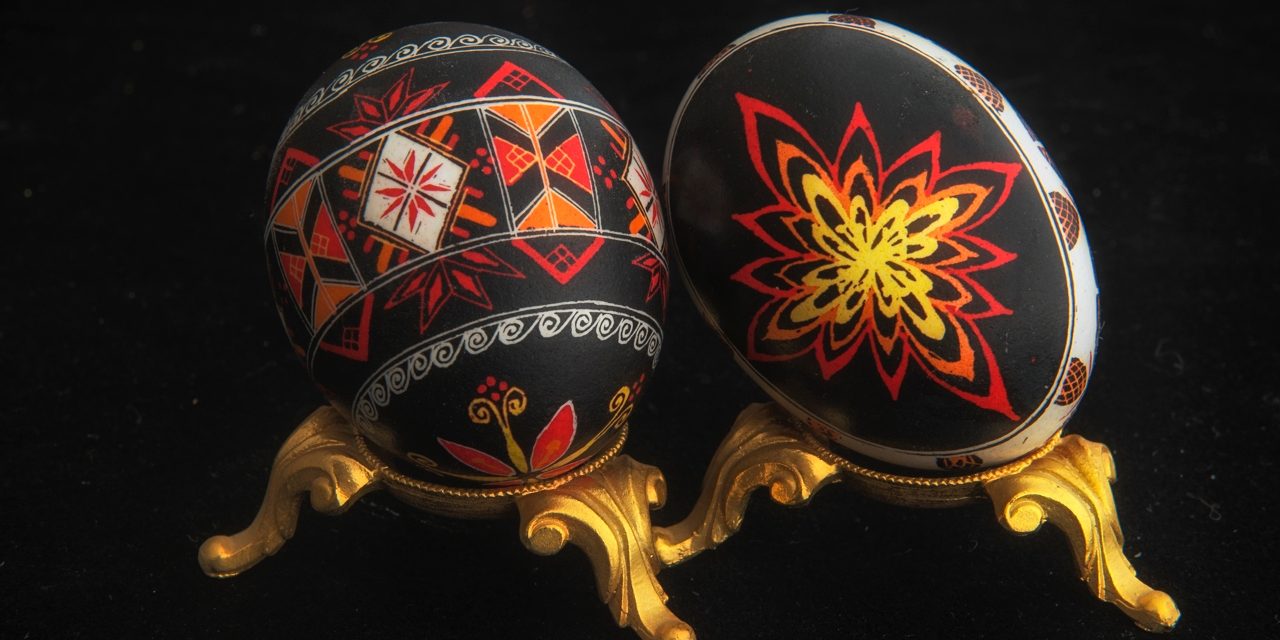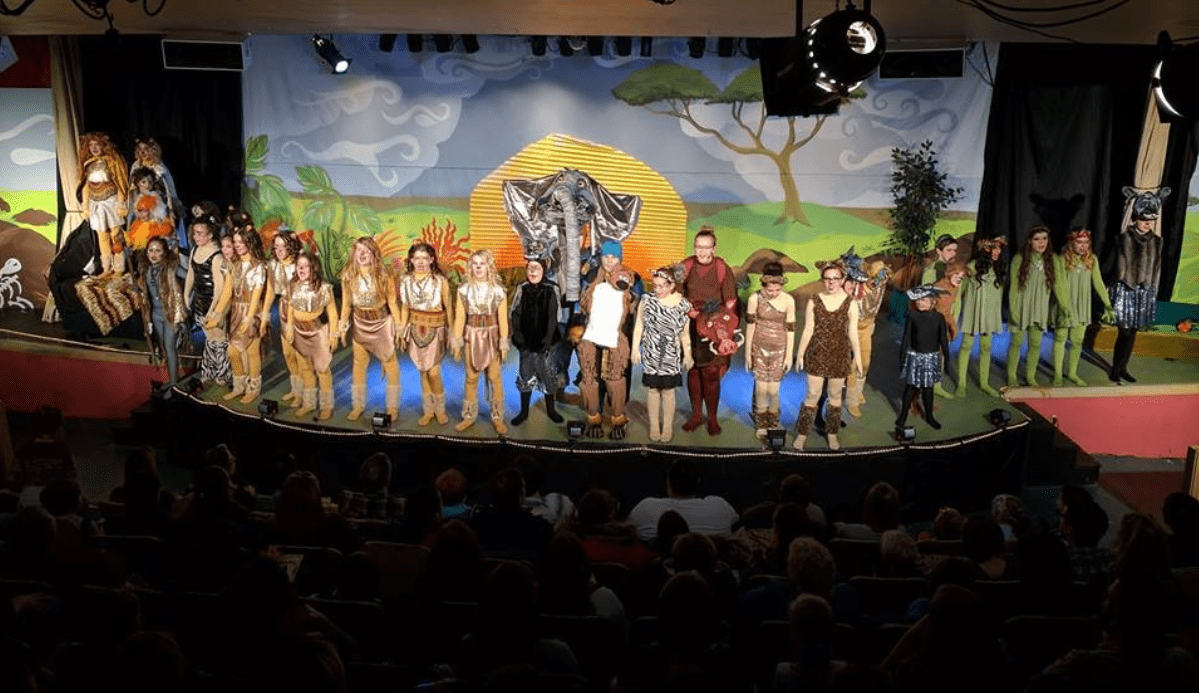An Art Form of Resistance
By Emily Turner
The art of pysanky, or decorated eggs, dates back to Pagan times, and is alive and well in Thunder Bay among the Ukrainian community. Though they may just look like painted Easter eggs, pysanky is an intricate art form that symbolizes the beauty and resilience of Ukrainian culture.
 Hanusia Tkaczyk, one of the few community members actively involved in the creation of pysanky, describes herself as an artisan, not an artist, because she recreates art that has existed for centuries. She was first taught by her mother at the age of 10 and has been engaged in the process ever since, because of all it symbolizes to her. “To value beauty and tradition over power, that’s what it is for me, for a lot of us,” she says.
Hanusia Tkaczyk, one of the few community members actively involved in the creation of pysanky, describes herself as an artisan, not an artist, because she recreates art that has existed for centuries. She was first taught by her mother at the age of 10 and has been engaged in the process ever since, because of all it symbolizes to her. “To value beauty and tradition over power, that’s what it is for me, for a lot of us,” she says.
Though practiced across Eastern Europe, pysanky has a different meaning for Ukrainians because it represents an authentic folk culture that has faced oppression and persecution for centuries. Due to all the violence the nation has faced, pysanky has come in and out of fashion over time. It saw a resurgence in 1991 after the dissolution of the Soviet Union. It carries profound significance now as the attack against Ukraine continues. “Originally it was a spiritual practice,” Tkaczyk shares. “Then it became a cultural practice, and these days, it’s more an act of political resistance.”
 Pysanky symbolizes renewed life and springtime. Many people believe that the eggs hold magical powers, are a symbol of good fortune, and offer blessings to the person who receives them. Tkaczyk shares a legend that maintains, “As long as one person on this Earth is creating pysanky, evil will not prevail.” As we have now passed the one-year mark of Russia’s full-scale invasion of Ukraine, this sentiment is especially heartwarming.
Pysanky symbolizes renewed life and springtime. Many people believe that the eggs hold magical powers, are a symbol of good fortune, and offer blessings to the person who receives them. Tkaczyk shares a legend that maintains, “As long as one person on this Earth is creating pysanky, evil will not prevail.” As we have now passed the one-year mark of Russia’s full-scale invasion of Ukraine, this sentiment is especially heartwarming.
Since the rise of Christianity, eggs have been primarily decorated during Lent and then exchanged at Easter. The process of creating pysanky is meditative, says Tkaczyk, as the process requires a gentle hand, patient mind, and careful eye. The eggs mostly serve as decoration around Easter time, though some display them for any significant holiday. The name pysanky comes from the Ukrainian verb for writing: the eggs are not usually painted, but the fine, decorative lines are “written” in wax with a stylus before the eggs are carefully dipped into different coloured dye.
 To learn more, or to purchase some eggs for Easter, check out the Facebook page Easter Eggs by Hanusia. This year, like last year, she is selling them as a fundraiser for Ukraine with the support of her church, the Lakehead Unitarian Fellowship.
To learn more, or to purchase some eggs for Easter, check out the Facebook page Easter Eggs by Hanusia. This year, like last year, she is selling them as a fundraiser for Ukraine with the support of her church, the Lakehead Unitarian Fellowship.















